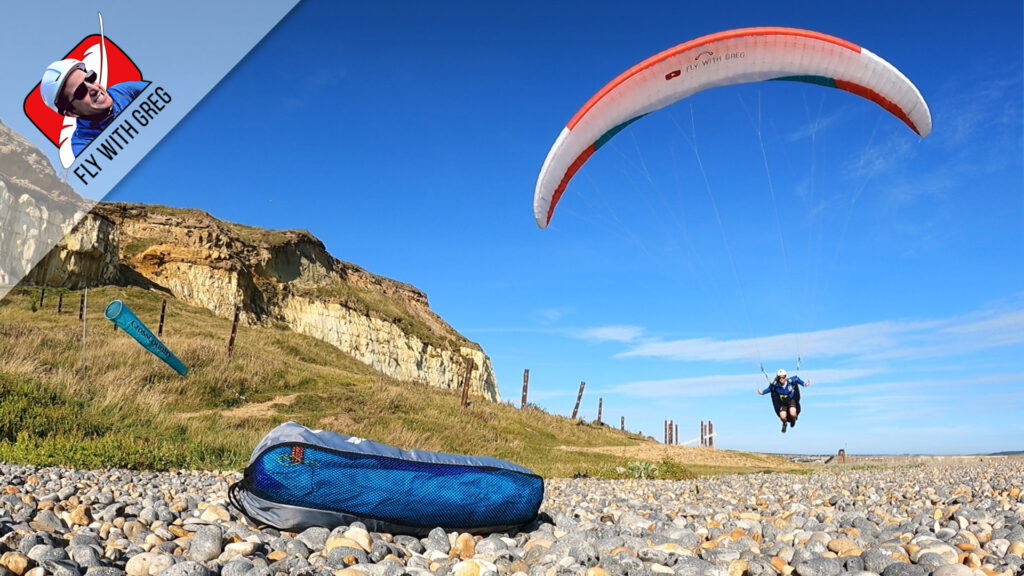A swoop flare is performed by inducing a small pitch to increase your wing speed as you approach your landing spot. You do it to produce a better ‘round out’: first your wing accelerates, then you swing forward to catch up, and you move ahead of the wing when you flare. This can produce a softer and slower landing touchdown. It is especially useful on tandem gliders or in uneven, sloping terrain.
How do you do it?
- Approach your landing with quarter brakes applied.
- Release your brakes at about eight meters up (one paraglider height)
- flare after the bottom of the pendulum swing.
If you are flying fast when you flare it has more effect.

Top Tips:
Most beginners do the opposite – slowing down more and more as the ground approaches. This steepens your approach angle and gives you a harder landing with no forward swing to reduce the speed and impact.
- Swoop as low as you can without touching down during the pendulum.
- Stand upright and don’t use your hands for balance.
- From full speed go to full brakes about 3 seconds before you think you’ll touch down.
- Don’t do any low turns. You’ll lower your speed and increase your sink rate, so your final flare won’t be as effective. Even a wide steady turn messes up your swoop, and remember you’ll lose extra height in the turn.
It’s best to separate your turn onto finals from your landing swoop, but advanced pilots can use a sharp 90 degree turn at just the right altitude to create a more dramatic swoop. Only do this if your landing skills are well developed.
Warning! If you flare too early to avoid overshooting your landing spot, you might climb high. If you then release the brakes, you pitch into the ground. So don’t let the wing pitch ahead of you. Keep half brakes on. You can delay the stall by using rhythmic quick releases with a slow cadence (butterfly flare). Sometimes you’ll need more height for your swoop: in turbulent conditions, when passing into a wind shadow, when overloaded (volbiv or flying mini wings), on hot, moist days or when landing at high altitudes.
Where do you practice it?
Get yourself in a position where you can do your final swoop in a consistent way. So place a spot landing below a small training hill, and start practicing on the swoop timing, so you learn how much height you’re going to lose, how much you can swoop through and how far it’s going to carry you before you touch down.
Then come in at different angles to prepare for wind switches. If you keep your speed high you can flare in any direction. This will even work for a downwind approach, as long as you create enough of an impulse and swoop.
With practice, standing upright and timing the flare should be automatic. Then you only need to concentrate on judging your glide. In zero wind a good swoop will even let you land upslope. With stronger wind, start your swoop closer to the spot.

You’ll see this landing everywhere. Pro pilots do it all the time. Now you know how to do it! Watch the demonstration – it’s currently available as part of the free trial pack in my academy!

